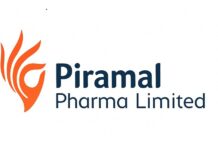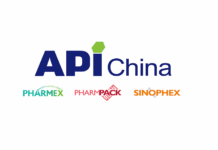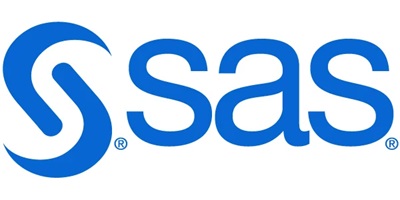As we approach 2025, the trajectory is clear: Health care and life sciences are steadily laying the groundwork for sustained transformation and innovation. There will be no sudden disruption, no major pivot, yet focused efforts to build agile, resilient organisations.
SAS predicts the coming year will be defined by continued integration of health systems, modernisation of technology, and an increasingly active role of patients and consumers in directing their care in industries shaped by regulation and public trust. Health care and life sciences experts from global data and AI leader SAS shared their thoughts on the current and future state of the industries.
Targeted AI applications drive expanded AI usage. Health care organisations and pharmaceutical companies will explore new ways to implement AI-driven insights at every level, from patient care personalisation to faster drug development cycles, with a focus on expanded use of AI in targeted areas of the ecosystem. As AI proves its own value in a variety of ecosystem-specific settings, we expect to see increased governance and directives for the use of AI from CIOs, CTOs, regulators and industry leaders in the form of company-specific AI playbooks.
-
Alyssa Farrell, Director, Global Health Care & Life Sciences Industry Marketing, SAS
Generative AI reaches the inner workings of the clinical trial. Due to sophisticated digitisation and standardisation techniques, clinical trial protocols now allow use of AI for high-quality information extraction and generation to help facilitate the development of innovative therapies. Applying generative AI to clinical trials will lead to inclusion of underserved populations, faster submissions, and overall acceleration of new clinical trial models and approaches.
-
Mark Lambrecht, Senior Director, Health Care & Life Sciences Advisory, SAS
Health care and pharma converge. Pharma and health care are working more closely than ever, using data and shared insights to drive innovation in patient care and treatment development. In 2025, this convergence is no longer experimental – it will be foundational to how these industries operate. However, data interoperability will remain the primary challenge for these traditionally siloed industries. Ensuring that data flows freely and securely across systems will be a critical focus in the year ahead to move toward tangible convergence. For patients, this means more cohesive health experiences where care delivery and medical advancements are intertwined.
-
Gail Stephens, Vice President, Health and Life Sciences, SAS
Technology takes centre stage. Despite extraordinary advances, many parts of the health care technology stack remain fragmented and outdated and the need for a digital overhaul is unavoidable. Health care organisations, from hospitals to research labs, must reimagine their infrastructure, embracing solutions that modernise and integrate the various systems on which they rely. But even with the right tools, financial investment will be paramount. For the industry to benefit from the promise of AI, substantial resources must be directed toward infrastructure, prioritising data integrity, security and usability.
-
Steve Kearney, Global Medical Director, SAS
Payers tap technology to help strengthen the public health framework. After years in a state of public health emergency due to COVID-19, we will see payers and public health vow to keep communication more open than it has been in the past. Data sharing is key to this effort, and increases in interoperability are enabling payers and public health to speak the same language. Advancements in technology, such as AI-driven analytics and real-time data exchanges, will further streamline collaboration and decision-making. Expect to see more shared accountability evolve through the standardisation of metrics and shared investments to make healthier populations.
-
Amanda Barefoot, MHA, Managing Director, Health Care & Life Sciences Solutions, SAS
Citizens and consumers push to get smart health tech. In response to the European Health Data Space proposed regulation, hospitals will seek the ability to exchange patient health data across borders securely to drive outcomes and new research paradigms. This functionality will open a health-tech revolution, resulting in interesting health consumer apps reaching the market with a mix of wearable data and patients’ historical and current health states. Patients, members, citizens, etc., will start to demand smarter usage of their own healthcare data.
-
Christian Hardahl, EMEA Health Care Industry Leader, SAS
Data management remains a priority. Robust data management will once again emerge as a critical priority, driven by the increasing complexity of data, regulatory requirements and the growing recognition of not only the value of data assets but also the value of clean, quality data. Organisations will look to enhance data management practices through cloud-based data and AI platforms that seamlessly connect data across the enterprise (e.g., clinical data, real-world data, commercial customer data) and boost productivity through automation in the cleansing, quality, and mastering steps. This will lead to accelerated timelines and processes, while increasing patient-centricity throughout the pharmaceutical life cycle.
-
Brittany Shriver, Head of Life Sciences Industry Consulting, SAS
Globalisation of public health reaches beyond historical barriers of opposition. Government health agencies will seek innovation and technological modernisation by examining the progress of those who are successful and deploying projects with universal geographic applicability. Likewise, ingenuity will drive novel uses of analytic technology in government health. Convening of public, private and education sectors will generate new ways to detect, model and anticipate diseases that threaten the stability of human health.
-
Meg Schaeffer, National Public Health Advisor and Epidemiologist, SAS
AI-driven automation transforms clinical work life. In clinical work, there will be a significant focus on reimagining processes and automating repetitive tasks using AI and natural language processing. This will result in an improved clinical work life where time and expertise is valued and clinicians are offered the opportunity to practise at the top of their licence versus spending time on tasks that take them away from the patient.
-
Heather Hallett, RN, Health Care Executive Advisor, SAS
Learn more about SAS’ analytics and AI solutions for health care (sas.com/healthcare) and life sciences (sas.com/lifesciences).



















